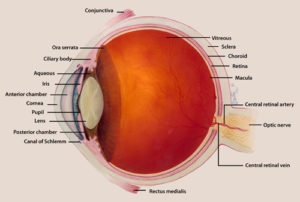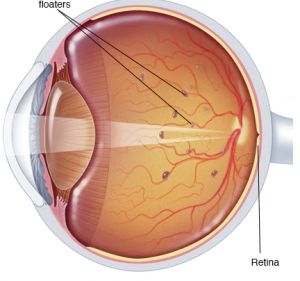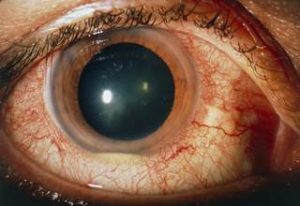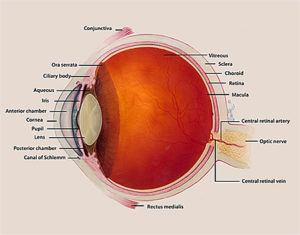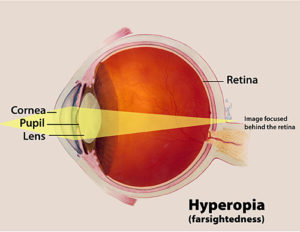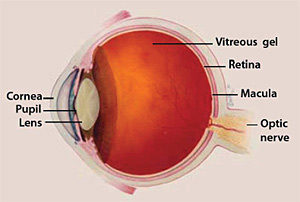Vision & Health Blog

Showing 41–50 of 51 results
-
Blog
Anophthalmia and Microphthalmia (Missing or Small Eyes)
With anophthalmia and microphthalmia, one or both eyes is missing (in the case of anophthalmia) or abnormally small (microphthalmia) at birth. They are rare birth defects that may co-exist with other abnormalities that developed during pregnancy.
-
Blog
Floaters
Floaters are small specks, squiggly lines, or cobweb-like images that seem to dart about in front of your eyes, especially in front of something bright—like a blue sky or a white background (such as a computer screen or paper). They move as your eyes move.
-
Blog
Behçet’s Disease of the Eye
Behçet’s disease is a type of autoimmune disease. In people autoimmune diseases, the immune system attacks their own tissues. In the case of Behçet’s disease (also known as “adamantiades”), the autoimmune reaction may cause the blood vessels to become inflamed and damaged, including those in the eye.
-
Blog
Glaucoma
Glaucoma refers to a group of diseases that can cause vision loss by damaging the optic nerve. It can occur in one or both eyes.
-
Blog
Bietti’s Crystalline Dystrophy
Bietti’s crystalline dystrophy (BCD) is a rare inherited eye disease that causes crystals in the cornea (the clear covering of the eye) and atrophy (shrinkage) of the back layers of the eye.
-
Blog
Histoplasmosis
Histoplasmosis is a fungal infection caused by Histoplasma capsulatum (histo) spores, which are inhaled into the lungs. The fungus is found in the soil and may be released into the air when plowing fields, digging holes, or sweeping chicken coops.
-
Blog
Blepharospasm (Eyelid Spasms)
Blepharospasm is a condition which causes abnormal blinking or spasms of the eyelids which you cannot control.
-
Blog
Low Vision
Low vision is a permanent loss of vision that cannot be improved with eyeglasses, contact lenses, medicine, or surgery. It makes everyday tasks more challenging. It can be shocking and depressing to learn you have low vision, but there are things you can do to cope with it.
-
Blog
Hyperopia (Farsightedness)
With hyperopia, more commonly known as farsightedness, objects that are far away from you look clearer to you than those that are closer. If you have significant hyperopia, all objects may appear blurry to you, whether they are near or far.
-
Blog
Macular Edema
The macula is the central part of the retina—the light-sensing tissue in each eye. The macula is responsible for sharp, “straight-ahead” vision. Macular edema is the build up of fluid in the macula, causing it to swell and distorting vision.
Join our Mission
Lighthouse Guild is dedicated to providing exceptional services that inspire people who are visually impaired to attain their goals.

